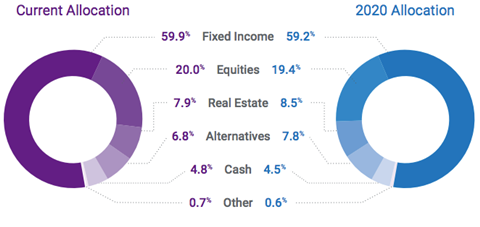Insurers are planning to keep portfolio allocations in 2020 largely unchanged from this year’s except with regard to real estate and alternatives, according to a survey commissioned by Natixis Investment Managers.
However, regulations are preventing insurers from satisfying their appetite for more investment in these areas, the asset manager indicated.
According to the survey, insurers anticipated increasing their allocation to real estate from 7.9% this year to 8.5% next year, and to alternatives from 6.8% to 7.8%.
“Views on the portfolio functions these strategies perform in today’s market might suggest that current allocations and upcoming shifts would be significantly larger,” said Natixis Investment Managers in a report on the survey.
“But at a time when insurers need alpha to meet return assumptions and long-term liabilities, they are finding that regulatory requirements limit their ability to act.”
In a press release, the asset manager noted that 74% of insurers were struggling to balance generating alpha with the cost of capital in a low-yield environment.
Anticipated portfolio allocation shifts
(article continues below)

The survey was of 200 chief investment officers “and team members” at life, property, and casualty and reinsurance companies in Asia, Europe and North America, with data gathered in July.
Natixis noted that, despite the grown in appetite for alternatives among insurers, nearly all (89%) of insurance investment teams said regulations kept them from investing in these asset classes.
This represented a significant increase compared with the same survey in 2015, when Solvency II had not come into force, the asset manager said.
Solvency II is being reviewed and, in a consultation paper issued last month, EIOPA, the EU insurance regulator, appeared to open the door to the idea of lowering capital requirements for real estate investments.
Natixis Investment Manager noted that its survey found that the main reasons insurance executives say they don’t use more alternatives in their portfolio are:
- Complexity (51%)
- Their organisation’s investment restrictions (42%)
- Fees (42%)
- Regulatory constraints (41%)
- Liquidity issues (37%)
“As insurers grapple with the regulatory and executional complexity that comes with the search for higher yield and moving into alternatives, investment teams are increasingly drawing on external expertise to access innovative and specialised capabilities,” said Natixis.
Seven in 10 (72%) of the survey respondents outsource some of their portfolios, with 10% of insurers delegating their entire portfolio to an outside firm. On average, insurance investors outsource nearly half (48%) of their portfolio, according to the survey.
According to research by data analysis firm Cerulli Associates, almost a third of European insurance companies expect to reduce the number of third-party asset managers they work with over the next 12 to 24 months.
The Natixis IM survey report can be found here.












No comments yet